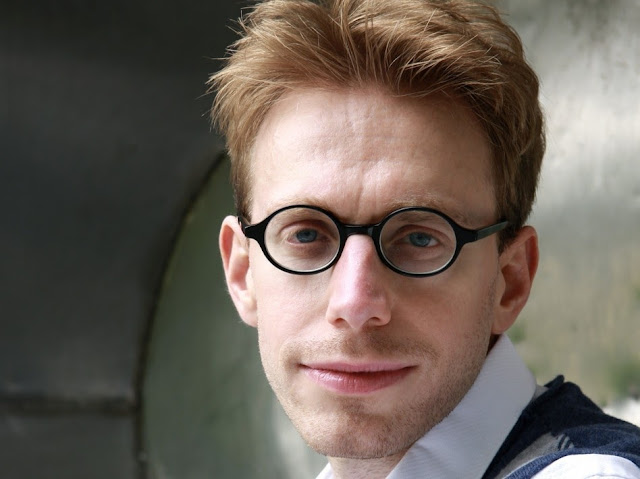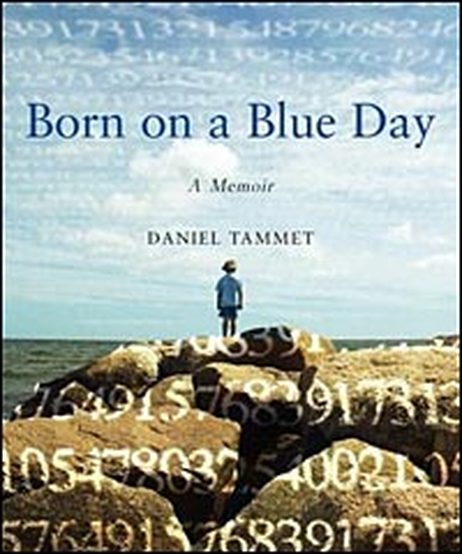The Beauty And Calm Of 'Thinking In Numbers'
by NPR STAFF
August 11, 2013 5:20 AM
http://www.npr.org
by NPR STAFF
August 11, 2013 5:20 AM
http://www.npr.org
There are numbers all around us. They are in every word we speak or write, and in the passage of time. Everything in our world has a numeric foundation, but most of us don't see those numbers. It's different for Daniel Tammet. He's a savant with synesthesia, a condition that allows him to see beyond simple numerals — he experiences them.
Tammet drew attention around the world about a decade ago when he recited, from memory, the number pi. It took him five hours to call out 22,514 digits with no mistakes.
He spoke to the Weekend Edition Sunday host Rachel Martin about his new book, a collection of essays called, Thinking in Numbers.
Interview Highlights
On visualizing numbers as colors, shapes, even poems
"Every number has its own color, so the number 1 is like a shining light from a lantern. The number two is more like a flowing, darker purple, violet color. Three is green, and after 10 what happens is I see the colors, but the individual digits contribute their own colors, so I am seeing a blend of those primary colors. And when I recited the number pi, I would see the colors as a landscape, full of textures and emotions, and it would blend together like a kind of story, or poem, that I could recite to those who were listening to me."
On being skeptical of 5,040, the "ideal number"
"It's a highly divisible number. You can take any number of the first digits 2, and 3 and 4 ... and so on and 5,040 divides evenly into them. It also divides into 12, and so in Plato's imagination, the perfect society would divide into 12 ... According to this figure, everything would be divided evenly. There would be no war, there would be no discord, and of course this idea is extremely attractively to our ears today. Ears that hear too often news of wars and famine and misery. And, at the same time, I think we're, all of us, wise enough to realize Plato was perhaps a little bit naive as well ... There are things that we cannot calculate ... There is always an element of humanity that escapes mathematics, that escapes numbers as well."
On trying to calculate love
"The relationship that I have with [my mother] is intensely loving, of course, but complex. When I was a child on the autistic spectrum, there were many things that my mother did, or said, that I didn't understand. And I constructed something like a model, what mathematicians would call a predictive model, of her behavior, to create an imaginary mother. And of course, what I came to realize was that it was impossible. There was always a way in which my mum got around even the most sophisticated calculation, and so I came to realize that there are always going to be aspects of reality that go beyond our calculations."
Daniel Tammet's other books include Born on a Blue Day and Embracing the Wide Sky.
Jerome Tabet/Courtesy Little, Brown and Company
Excerpt: Thinking In Numbers
In a smallish London suburb where nothing much ever happened, my family gradually became the talk of the town. Throughout my teens, wherever I went, I would always hear the same question, "How many brothers and sisters do you have?"
The answer, I understood, was already common knowledge. It had passed into the town's body of folklore, exchanged between the residents like a good yarn.
Ever patient, I would dutifully reply, "Five sisters, and three brothers."
These few words never failed to elicit a visible reaction from the listener: brows would furrow, eyes would roll, lips would smile. "Nine children!" they would exclaim, as if they had never imagined that families could come in such sizes.
It was much the same story in school. "J'ai une grande famille" was among the first phrases I learned to say in Monsieur Oiseau's class. From my fellow students, many of whom were single sons or daughters, the sight of us siblings together attracted comments that ranged all the way from faint disdain to outright awe. Our peculiar fame became such that for a time it outdid every other in the town: the one-handed grocer, the enormously obese Indian girl, a neighbor's singing dog, all found themselves temporarily displaced in the local gossip. Effaced as individuals, my brothers, sisters, and I existed only in number. The quality of our quantity became something we could not escape. It preceded us everywhere: even in French, whose adjectives almost always follow the noun (but not when it comes to une grande famille).
With so many siblings to keep an eye on, it is perhaps little wonder that I developed a knack for numbers. From my family I learned that numbers belong to life. The majority of my math acumen came not from books but from regular observations and day-to-day interactions. Numerical patterns, I realized, were the matter of our world. To give an example, we nine children embodied the decimal system of numbers: zero (whenever we were all absent from a place) through to nine. Our behavior even bore some resemblance to the arithmetical: over angry words, we sometimes divided; shifting alliances between my brothers and sisters combined and recombined them into new equations.
We are, my brothers, sisters, and I, in the language of mathematicians, a "set" consisting of nine members. A mathematician would write:
S = {Daniel, Lee, Claire, Steven, Paul, Maria, Natasha, Anna, Shelley}
Put another way, we belong to the category of things that people refer to when they use the number nine. Other sets of this kind include the planets in our solar system (at least, until Pluto's recent demotion to the status of a non-planet), the squares in a game of x's and o's, the players in a baseball team, the muses of Greek mythology, and the Justices of the U.S. Supreme Court. With a little thought, it is possible to come up with others, including:
{February, March, April, May, August, September, October, November, December} where S = the months of the year not beginning with the letter J.
{5, 6, 7, 8, 9, 10, Jack, Queen, King} where S = in poker, the possible high cards in a straight flush.
{1, 4, 9, 16, 25, 36, 49, 64, 81} where S = the square numbers between 1 and 99.
{3, 5, 7, 11, 13, 17, 19, 23, 29} where S = the odd primes below 30.
There are nine of these examples of sets containing nine members, so taken together they provide us with a further instance of just such a set.
Like colors, the commonest numbers give character, form, and dimension to our world. Of the most frequent — zero and one — we might say that they are like black and white, with the other primary colors — red, blue, and yellow — akin to two, three, and four. Nine, then, might be a sort of cobalt or indigo: in a painting it would contribute shading, rather than shape. We expect to come across samples of nine as we might samples of a color like indigo — only occasionally, and in small and subtle ways. Thus a family of nine children surprises as much as a man or woman with cobalt-colored hair.
I would like to suggest another reason for the surprise of my town's residents. I have alluded to the various and alternating combinations and recombinations between my siblings. In how many ways can any set of nine members divide and combine? Put another way, how large is the set of all subsets?
{Daniel}... {Daniel, Lee}... {Lee, Claire, Steven}... {Paul}... {Lee, Steven, Maria, Shelley}... {Claire, Natasha}... {Anna}...
Fortunately, this type of calculation is very familiar to mathematicians. As it turns out, we need only to multiply the number two by itself, as many times as there are members in the set. So, for a set consisting of nine members the answer to our question amounts to: 2 × 2 × 2 × 2 × 2 × 2 × 2 × 2 × 2 = 512.
This means that there existed in my hometown, at any given place and time, 512 different ways to spot us in one or another combination. 512! It becomes clearer why we attracted so much attention. To the other residents, it really must have seemed that we were legion.
Here is another way to think about the calculation that I set out above. Take any site in the town at random, say a classroom or the municipal swimming pool. The first "2" in the calculation indicates the odds of my being present there at a particular moment (one in two — I am either there, or I am not). The same goes for each of my siblings, which is why two is multiplied by itself a total of nine times.
In precisely one of the possible combinations, every sibling is absent (just as in one of the combinations we are all present). Strange as it may sound, we can even define those sets containing no objects. Mathematicians call them an "empty set." Where sets of nine members embody everything we can think of, touch, or point to when we use the number nine, empty sets are all those that are represented by the value zero. So while a Christmas reunion in my hometown can bring together as many of us as there are Justices on the U.S. Supreme Court, a trip to the moon will unite only as many of us as there are pink elephants, four-sided circles, or people who have swum the breadth of the Atlantic Ocean.
From Thinking In Numbers: On Life, Love, Meaning, and Math by Daniel Tammet. Copyright 2013 by Daniel Tammet. Excerpted by permission of Little, Brown and Company.
When Daniel Tammet thinks about numbers, each one has a distinct personality. Thirty-seven is lumpy, for example; four is shy. He has a rare form of autism that gives him astonishing mental powers, such as effortlessly calculating huge numbers in his head with the speed of a computer.
Author Daniel Tammet talks about his new book Born on a Blue Day: Inside the Extraordinary Mind of an Autistic Savant, and his amazing facility with numbers.



No comments:
Post a Comment